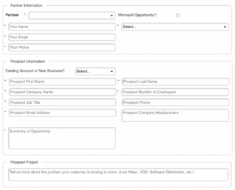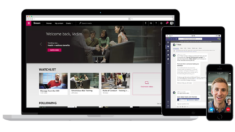Diversity and Inclusion Within the Workplace
CMMA BlogIt’s June in the Bay Area and there are rainbow flags on almost every building as we celebrate Pride month. There are Pride events happening all over the world celebrating the impact that LGBTQI+ people have had on the world. Over the past few years, we have seen a massive influx of corporations showing their support with Pride-themed campaigns, products, advertising and presence in the parades and celebrations.
It is wonderful to see these big brands support Pride, but if they only wave a flag during a celebration is that enough? There are some great tactics for these brands to engage with this community throughout the year, but how do big businesses drive this support for all underserved communities within their workforce? I believe businesses need to start from the inside before they can publicly pledge that they are supportive. But how?
Business Benefits of Diversity and Inclusion
Before the board or executive team of any business is going to invest in a new strategy, they need to understand how it will benefit their bottom line. A Diversity and Inclusion (D&I) movement has many benefits that go well beyond a politically correct PR move. When seeking talent, if you have access to the broadest pool with different characteristics, skills and perspectives, you can build the best, most creative teams. With the best teams, you can innovate and solve problems faster, thus driving better results. For existing employees, feeling included, accepted and valued, regardless of sexual orientation, race, gender, age, religion, education, and other personal characteristics, will help employees feel happier in their workplace, will increase their engagement and will reduce turnover. For the company, D&I within the workplace boosts reputation and brand.
Walking the D&I Walk
Once leaders understand the benefits of D&I, developing a diversity strategy and instilling a culture of inclusion is a no-brainer. It is easy to talk about, but not so simple to execute.
Many companies are taking special care to ensure hiring procedures are free from biases and HR professionals are hiring people with diverse backgrounds and affiliations. While it takes an evaluation and tweak of a business’ hiring strategy and process, accomplishing diversity within the workforce is doable and measurable with headcount.
The inclusion part is where it gets tricky. As advocate Verna Myers puts it, “Diversity is being invited to the party. Inclusion is being asked to dance.” As a female in the tech industry, I’ve been to the party, I’ve been invited to dance and wow, does it feel amazing! I’ve also been to the party and have stood in the corner by myself not knowing what to do with myself, who to talk to or what I was doing there in the first place. There are countless articles and training programs on how to instill an inclusive culture. Harvard Business Review has outlined four levers that drive inclusion : inclusive leaders, authenticity, networking and visibility, and clear career paths. Many companies claim they have a diverse and inclusive work environment, but do they walk the walk?
Our partner Microsoft is taking great strides here. For the second year, they will have a Diversity and Tech track at Microsoft Ignite that I’m looking forward to attending in November. They hold their leaders and employees accountable. They have gone as far as to incorporate inclusion into their regular employee performance reviews. They have coined the term “shared core priority” making inclusion part of their daily work. And they participate in Pride celebrations around the world. As a Microsoft employee and a LGBTQI+ ally, my husband will proudly march down Market Street in San Francisco with my daughter on June 30th. It is pretty cool to see all that they do to advance this important movement. Read more here on how Microsoft has made inclusion every employee’s responsibility.
Maintaining an Inclusive Environment with Regular Trainings
In addition to making the workforce as diverse as possible, many corporate D&I campaigns include extensive training to reduce bias in the workplace while facilitating a positive environment. While these trainings alone aren’t enough to instill an inclusive culture and they won’t change someone’s personal bias, an employer can tell an employee what to do and can guide an employee’s behavior with regular, mandatory trainings. And who knows, maybe if one’s behavior shifts towards treating all humans equally, perhaps over time their attitude towards others will change as well.
Video as an Inclusive Training Tool
Regular trainings are great, but in this day and age of dispersed workforces, in-person trainings are disruptive and cost-prohibitive. If you are a global enterprise, how do you provide regular trainings to 300,000 employees all over the world? How can you connect and engage with your workforce? How do you make sure that each employee has participated in the training and has understood the lessons presented? And how do you make it accessible to your global workforce?
We believe that corporate video is a great tool for this.
Thousands of businesses (and many of our customers) use video to engage with their workforces by hosting quarterly updates, CEO All Hands Meetings, on-boarding training, cyber security training and the like. There has been a surge in the number of these businesses who are also using corporate video (both live and on-demand) to train their employees on diversity and inclusion.
While video training isn’t a one-stop-shop solution, it does reach your employees where they are. It also provides face-to-face engagement without requiring travel, it is accessible on any device, it can be translated into any language, it can include polls and quizzes to ensure that the content is being absorbed, and it can engage your team and get them talking about the importance of diversity and inclusion within the workplace. It is a move in the right direction.
Does your company have a Diversity and Inclusion strategy in place? I’d love to hear what tactics are working and what messages resonate best with your people.
Read the enterprise video buyers guide
Learn what it takes to pull of enterprise live video events successfully, from event strategy, scaling, analytics and more.
TALK TO AN EXPERT
Interested in corporate video to help educate and train your dispersed workforce, but not sure where to start?
Related Blog Posts
Life With & Without Kollective & Microsoft Teams
Experience a day in the life of Tom and Jerry. Both are communication professionals working for different enterprises. Jerry is all in on video and Microsoft Teams, Tom is not. Microsoft Teams Live Events Scales Communication and Kollective Scales Microsoft Teams Live…
Improve Enterprise Video Communication With These 5 Steps
Using video broadcasts can significantly improve communication across large enterprises, but it is difficult to get right. There are so many pitfalls, particularly as most companies don’t see video production as a core competency. The challenge for them now is that in…
Enterprise Video Broadcasts Increase Culture, Engagement and Productivity
Why has video broadcasting become one of the most vital tools for any large-scale enterprise? It comes down to three key benefits that can boost how a business connects with its own employees: Culture, Engagement and Productivity. An astounding 50% of the global…
The post Diversity and Inclusion Within the Workplace appeared first on Kollective Technology .















